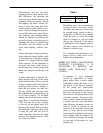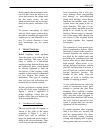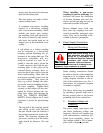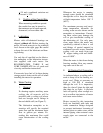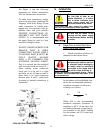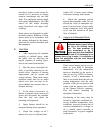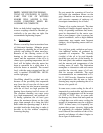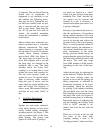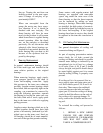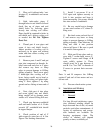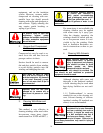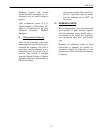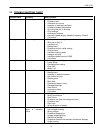
GEK-95352
16
NOTE: WHENEVER THE DISMAN-
TLING OF COUPLINGS IS NECES-
SARY, THE USE OF WITNESS
MARKS WILL ASSURE A BAL-
ANCED CONDITION WHEN RE-
ASSEMBLY IS COMPLETE.
Bolts on both bolted couplings and non-
reverse couplings should be checked pe-
riodically to be sure they are tight. See
recommended tightening torques.
A. Relubrication
Motors covered by these instructions have
oil lubricated bearings. Maintain proper
lubrication by checking the oil level peri-
odically and adding oil when necessary.
Because of the clearing action of the
bearing as the motor accelerates up to
speed, and the expansion of the oil as it
comes up to operating temperature, the oil
level will be higher after the motor has
been in operation for a while than it is
with the motor at standstill. The normal
level, with the motor stopped and the oil
cold, is marked STANDSTILL LEVEL
on the sight gage.
Overfilling should be avoided not only
because of the possibility that expansion
may force the oil over the oil sleeve and
into the motor, but also because operating
with the oil level too high prevents the
bearing from clearing itself of excess oil.
The resultant churning can cause extra
loss, high temperatures, and oxidized oil.
If, during operation, the oil level goes
above the maximum shown on the sight
gage, drain enough oil to bring the level
back within the operating range. A hole is
provided inside the drain plug to make it
possible to do this without completely
removing the plug.
Do not permit the operating oil level to
fall below the minimum shown on the
gage. Should it ever become necessary to
add excessive amounts of make-up oil,
investigate immediately for oil leaks.
Change oil at regular intervals. The time
between oil changes depends upon the se-
verity of operating conditions and, hence,
must be determined by the motor user.
One or two changes a year is average, but
special conditions, such as high ambient
temperature, may require more frequent
changes. Avoid operating motor with oxi-
dized oil.
Use only best grade, oxidation and corro-
sion inhibited turbine oil produced by
reputable oil companies. The viscosity
(weight) of the oil to be used depends
upon the type and size of the bearing, its
load and speed, the ambient temperature,
and the amount and temperature of the
cooling water (if used). The lubrication
nameplate or instruction with each motor
specifies the viscosity range of oil suit-
able for average conditions. The usual
recommendations are summarized in Ta-
ble 11, Oil Viscosity. Operation in ambi-
ent temperatures that are near or below
freezing may require preheating the oil or
the use of a special oil.
In some cases, water cooling for the oil is
impractical or undesirable, and the normal
operating oil temperature will be in range
of 170ºF to 210ºF. Also, in some cases
the bearing size, thrust-load and speed are
so high that even with water cooling the
normal oil temperature may be as high as
210ºF. In these cases, it is especially im-
portant that proper viscosity, high-grade
oil containing an oxidation inhibitor be
used. Observe the condition of the oil fre-
quently and change oil when it begins to
show signs of deterioration.



